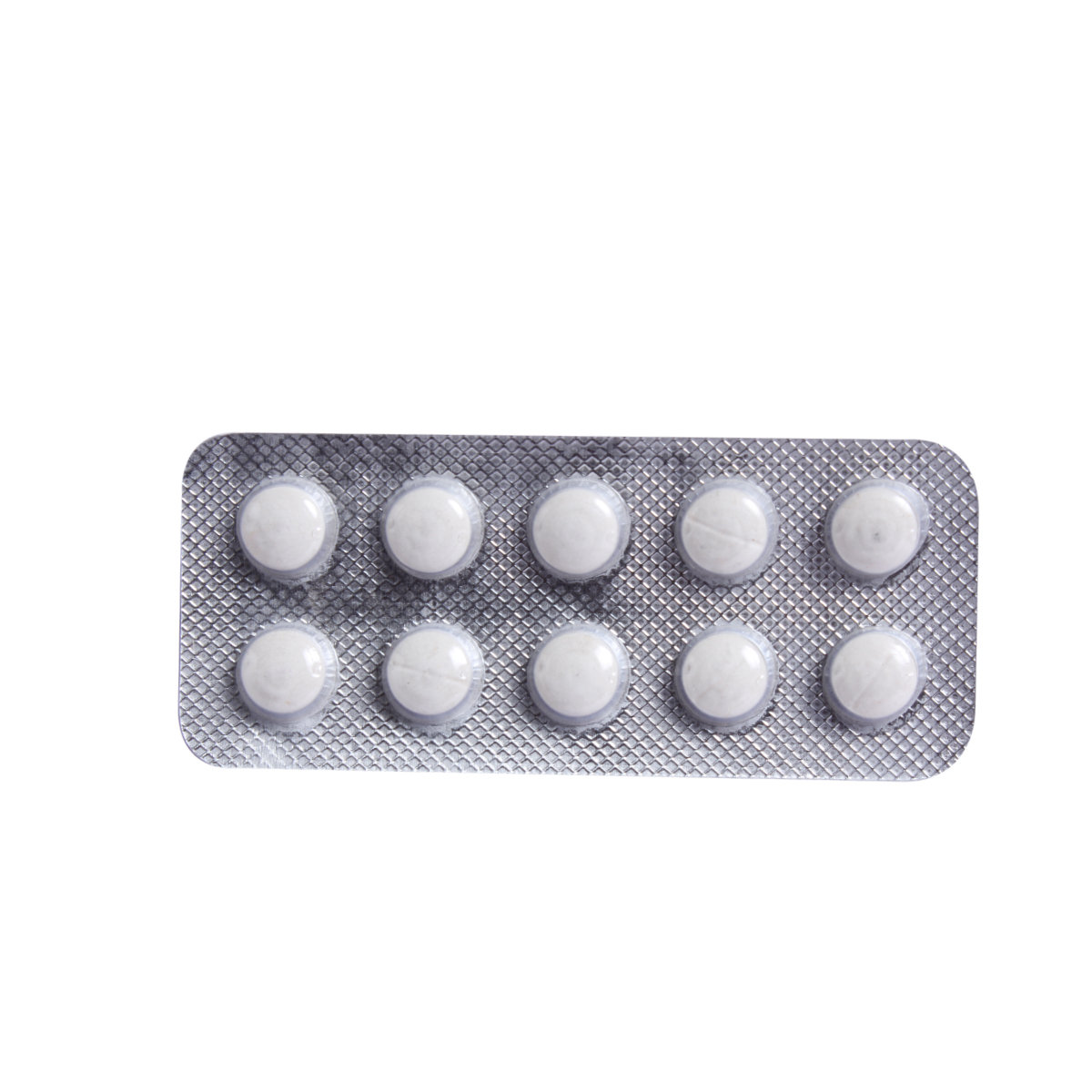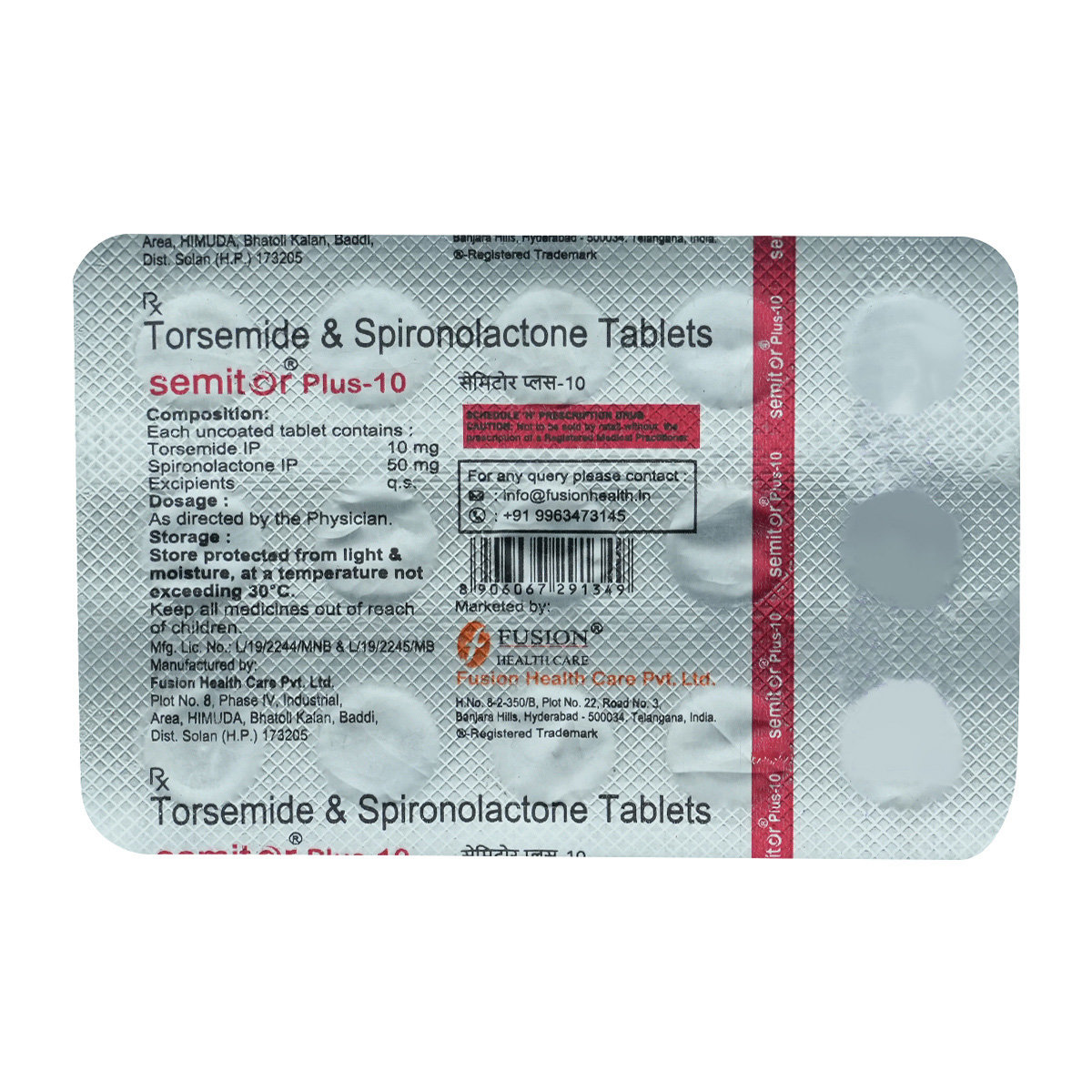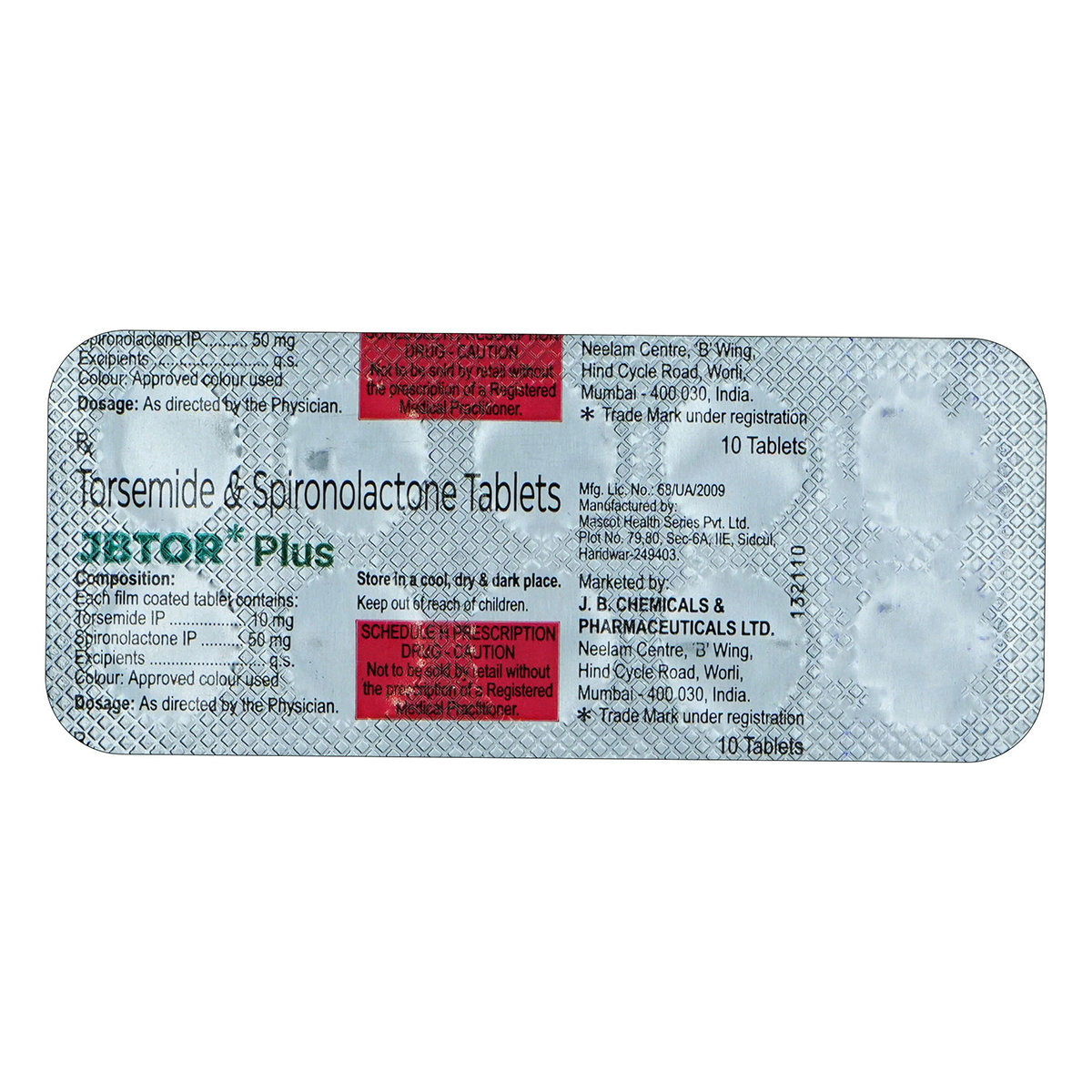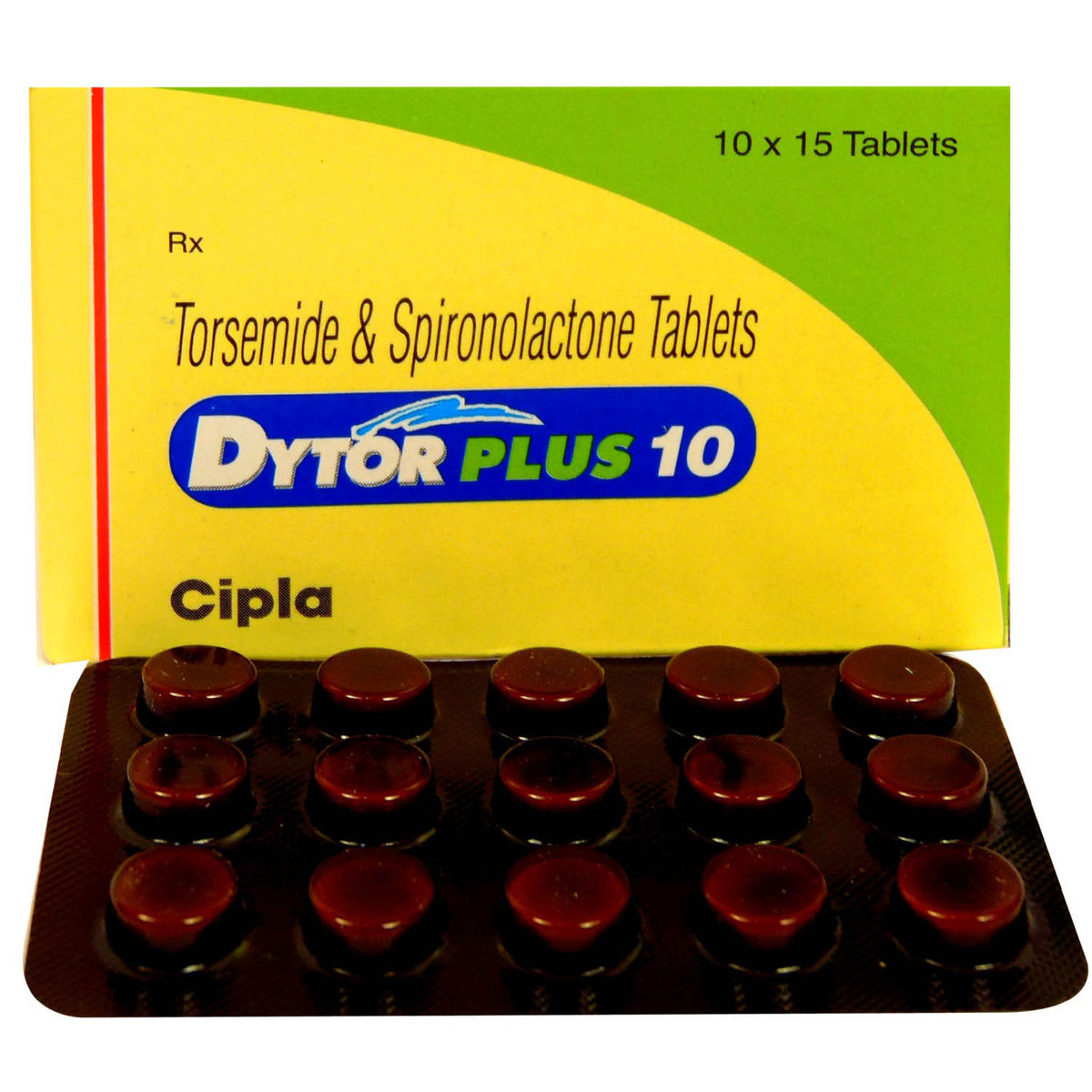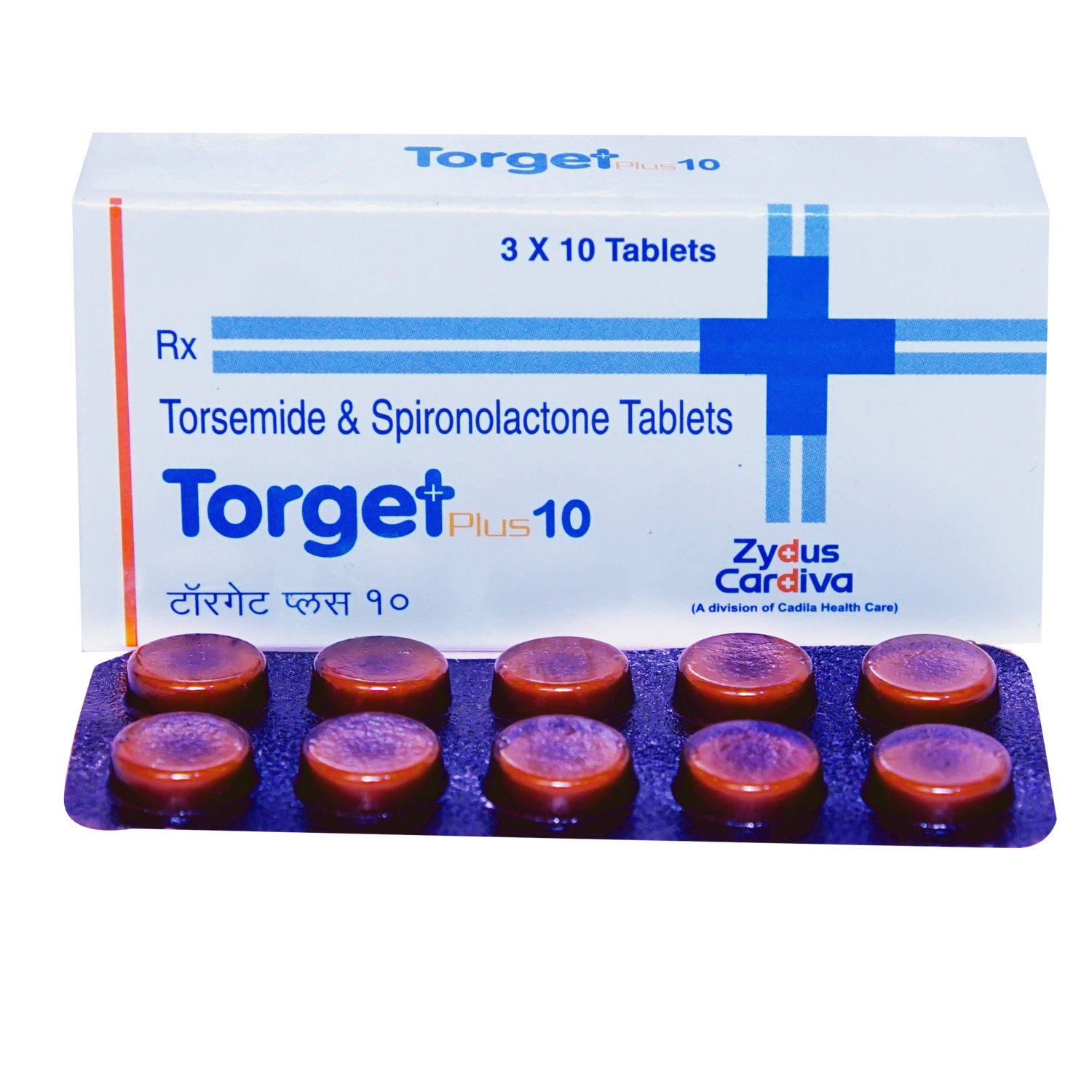Torlog Plus Tablet 10's


MRP ₹40
(Inclusive of all Taxes)
₹6.0 Cashback (15%)
Provide Delivery Location
Online payment accepted
 Prescription drug
Prescription drugWhats That
Composition :
Manufacturer/Marketer :
Consume Type :
Return Policy :
Expires on or after :
About Torlog Plus Tablet
Torlog Plus Tablet belongs to a class of medicine called 'diuretics' (water pills), primarily used to remove excess water from the body. It also maintains the bloodstream's potassium level and prevents hypertension (high blood pressure due to oedema (fluid retention). Oedema or fluid overload is associated with pulmonary hypertension (high blood pressure in the lung) or heart failure (irregular heart pumping). Leg swelling is the main characteristic of oedema, accompanied by shortness of breath, chest pain (angina), abnormal heart rhythms (arrhythmia) and swelling in other hands or abdomen areas.
Torlog Plus Tablet is a combination of medication containing Spirolactone and Torsemide. Both spironolactone and torsemide are diuretics and are prescribed for the treatment of resistant oedema (fluid overload) associated with pulmonary hypertension (high blood pressure in the lungs), heart failure, and hepatic cirrhosis (chronic liver damage). Torlog Plus Tablet works by increasing the amount of urine that is passed out from the kidneys. It effectively reduces excess fluid levels in the body and treats oedema (swelling) associated with heart, liver, kidney or lung disease. This reduces the heart's workload and makes the heart more efficient at pumping blood throughout the body. Thus, it also helps lower high blood pressure, reducing the chances of any future heart attack, stroke or angina (chest pain) in the future.
You can take Torlog Plus Tablet with food or without food with a glass of water. Take it preferably in the daytime to avoid frequent urination in the nighttime. Do not chew, crush or break it. Your doctor will advise you how often you take Torlog Plus Tablet based on your medical condition. In some cases, you may experience dehydration, electrolyte disturbances (potassium and sodium), headache, nausea, or dizziness. Most of these side effects of Torlog Plus Tablet do not require medical attention and gradually resolve over time. However, if the side effects are persistent, reach out to your doctor.
Try not to stop taking Torlog Plus Tablet of your own as doing so may raise your blood pressure, thereby increasing the risk of getting heart diseases and stroke. Inform your doctor if you are suffering from any kidney, liver or heart disease. If you are pregnant or breastfeeding, please tell your doctor so that the dosage of Torlog Plus Tablet can be prescribed accordingly. Please tell your doctor if you are taking any other medicines or are allergic to Torlog Plus Tablet . Reducing the amount of table salt (sodium chloride) in your food often relieves the body's swelling.
Uses of Torlog Plus Tablet
Directions for Use
Medicinal Benefits
Torlog Plus Tablet is a combination of medication containing Spirolactone and Torsemide. Both spironolactone and torsemide are diuretics and are prescribed for the treatment of resistant oedema (fluid overload) associated with pulmonary hypertension (high blood pressure in the lungs), heart failure and hepatic cirrhosis (chronic liver damage). Torlog Plus Tablet works by increasing the amount of urine that is passed out from the kidneys. It effectively reduces excess fluid levels in the body and treats oedema (swelling) associated with heart, liver, kidney or lung disease. This reduces the heart's workload and makes the heart more efficient at pumping blood throughout the body. Thus, it also helps lower high blood pressure, reducing the chances of any future heart attack, stroke or angina (chest pain) in the future.
Storage
Drug Warnings
Torlog Plus Tablet should not be given to the people allergic to Torlog Plus Tablet , have low blood pressure (less than 90 mm of Hg), have had a heart attack, kidney disease (with creatinine clearance less than 30 mL/min), liver disease, pregnant women, or planning to get pregnant and breastfeeding women. Besides this, it is contraindicated in low blood pressure (hypotension), cardiogenic shock (sudden stopping of blood flow to the heart), and aortic stenosis (heart valve problem). Torlog Plus Tablet can pass into breast milk, but its effect on the baby is unknown, so it is better to tell your doctor if you are taking Torlog Plus Tablet and breastfeeding. Dehydration with electrolyte and acid-base disturbances must be corrected before using Torlog Plus Tablet . Do not take any extra potassium supplements or potassium-rich foods such as bananas and broccoli with Torlog Plus Tablet , as it may lead to an excessive increase in blood potassium level (hyperkalemia). Please take Torlog Plus Tablet at least 4 hours before sleeping to avoid frequent urination at night.
Diet & Lifestyle Advise
- Consume antioxidant-rich food. Blueberries, cherries, tomatoes, squash, and bell peppers are high in antioxidants.
- Eat natural diuretic foods. Asparagus, beets, green beans, grapes, onion, leafy greens, pineapple, leeks, pumpkin, and garlic are all-natural diuretic foods.
- Use healthy cooking oils like soybean, olive, canola, and coconut oil.
- You should avoid refined foods such as white bread, spaghetti, sugar, and red meat.
- Reduce or eliminate Trans fatty acids, which are found in commercially baked items such as cookies, cakes, crackers, French fries, onion rings, doughnuts, and processed foods.
- Avoid consumption of too much salt or salty food.
- Keep your weight under control with a BMI of 19.5-24.9.
- Regular physical activity or exercise like walking improves your blood flow.
- When possible, elevate your legs or the swollen area on a chair or pillows.
- Avoid standing or sitting for extended periods of time.
- Avoid chronic stress as it can raise your blood pressure.
- Spend time with your loved ones to cope with stress and practice mindfulness techniques.
- Quitting smoking and alcohol consumption is the best strategy to lower the risk of many health complications.
Side Effects of Torlog Plus Tablet
- Dehydration
- Electrolyte disturbances (potassium and sodium)
- Increased blood uric acid
- Headache
- Nausea
- Dizziness
Habit Forming
Therapeutic Class
All Substitutes & Brand Comparisons
RX
Out of StockDYLOOP PLUS 10MG TABLET
Sinsan Pharmaceuticals Pvt Ltd
₹43.5
(₹3.92 per unit)
8% COSTLIERRX
Torkid Plus Tablet 15's
Econ Healthcare
₹79.5
(₹4.77 per unit)
32% COSTLIERRX
Torsid Plus 10/50mg Tablet 10's
Aristo Pharmaceuticals Pvt Ltd
₹56
(₹5.04 per unit)
40% COSTLIER
Product Substitutes
FAQs
Torlog Plus Tablet works by increasing the amount of urine that is passed out from the kidneys. It effectively reduces excess fluid levels in the body and treats edema (swelling) associated with heart, liver, kidney, or lung disease. This reduces the heart's workload and makes the heart more efficient at pumping blood throughout the body. Thus, it also helps lower high blood pressure, reducing the chances of any future heart attack, stroke, or angina (chest pain) in the future.
It is a medical term for fluid retention or overload. Due to oedema, the legs, hands, and other body parts start swelling increasing blood pressure. If it does not subside, please consult your doctor immediately.
The main side effect of Torlog Plus Tablet is peeing (urination) more often than normal. Most people need to pee about 30 minutes after taking Torlog Plus Tablet , and again within a few hours. Do not take Torlog Plus Tablet before going to bed, or you may have to wake in the night to go for the urination frequently.
Yes, Torlog Plus Tablet is known to cause dehydration (excessive loss of fluids). The patient may experience dry mouth, decreased urine output, excessive thirst, hypotension (decreased blood pressure). So, please increase the intake of fluids to avoid excessive dehydration.
Yes, Torlog Plus Tablet can cause increased potassium level (hyperkalemia), especially in patients with kidney problems or if you are taking potassium supplements along with Torlog Plus Tablet . Please monitor your electrolyte level regularly to avoid an increase in blood potassium level.
Torlog Plus Tablet may cause orthostatic hypotension. This is low blood pressure that makes you feel dizzy or lightheaded when you stand up after sitting or lying down. This may be more common after just starting this drug. You can avoid this by standing up slowly. If the symptoms persists consult your doctor.
Drug-Drug Interactions Checker List
- METOPROLOL
- RAMIPRIL
- HYDROCHLOROTHIAZIDE
- ATORVASTATIN
- SILDENAFIL
- CARBAMAZEPINE
- PHENOBARBITAL
- CYCLOSPORINE
- IBUPROFEN
- ASPIRIN
Special Advise
- Treatment with Torlog Plus Tablet requires regular monitoring of serum potassium, sodium, and creatinine level.
- Monitor your blood pressure daily and if there is too much fluctuation, then immediately contact your doctor.
- If you have diabetes, torsemide in Torlog Plus Tablet may rarely affect your blood sugar. Check your blood sugar regularly as directed and share the results with your doctor. Your doctor may need to adjust your diabetes medication, exercise program or diet.
Disease/Condition Glossary
Oedema: Oedema, also known as fluid overload, occurs due to fluid build-up in spaces between the cells. Oedema can result from a variety of factors. Some oedema reasons are caused by your lifestyle, while an underlying medical problem causes others. Shortness of breath, chest pain (angina), abnormal heart rhythms (arrhythmia), and swelling in hands or abdominal areas are the symptoms of oedema.
Hypertension: The blood exerts increased pressure on the walls of blood vessels leading to hypertension. High blood pressure is expressed as systolic/diastolic pressure. Systolic pressure is the pressure in the arteries when the heart beats or pumps out blood. Diastolic pressure is the pressure in the arteries between the heartbeats. Blood pressure is measured in millimetres of mercury (mmHg) by a blood pressure monitor called a sphygmomanometer. Some of the symptoms are headache, dizziness, nosebleeds, altered vision, chest pain, weakness, and shortness of breath. However, most of the time, the signs and symptoms of hypertension are none.

Have a query?
Alcohol
Caution
You are recommended not to consume alcohol along with Torlog Plus Tablet to avoid unpleasant side-effects.
Pregnancy
Unsafe
Torlog Plus Tablet must not be taken during pregnancy.
Breast Feeding
Unsafe
Breast-feeding must be avoided during treatment with Torlog Plus Tablet .
Driving
Caution
It is not recommended to drive after taking Torlog Plus Tablet as it may occasionally cause drowsiness due to orthostatic hypotension (sudden drop in blood pressure on standing from lying position).
Liver
Caution
Torlog Plus Tablet to be taken with caution, especially if you have a history of liver diseases/conditions. Your doctor may adjust your dose depending upon your current kidney conditions.
Kidney
Caution
Torlog Plus Tablet to be taken with caution, especially if you have a history of Kidney diseases/conditions. Your doctor may adjust your dose depending upon your current kidney conditions.
Children
Unsafe
Torlog Plus Tablet is not recommended for children below 12 years of age.


